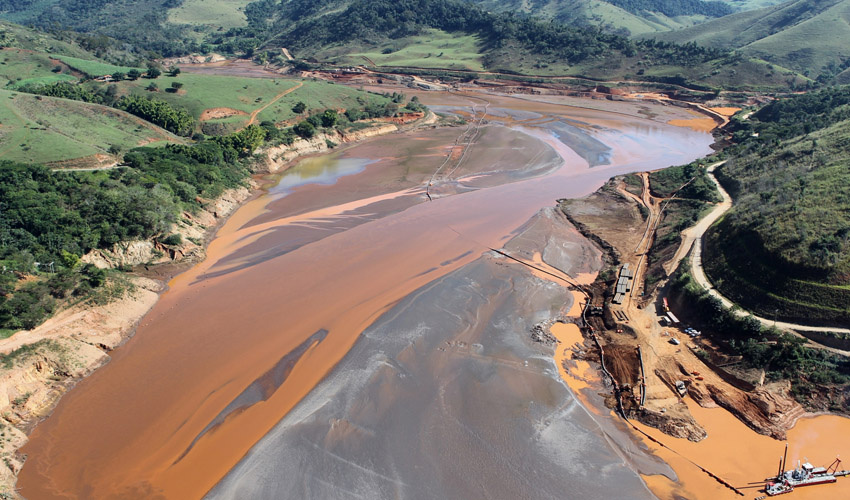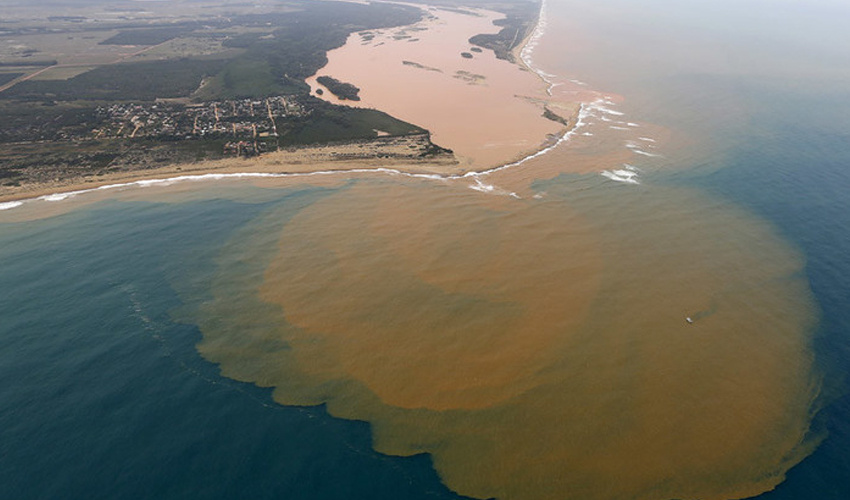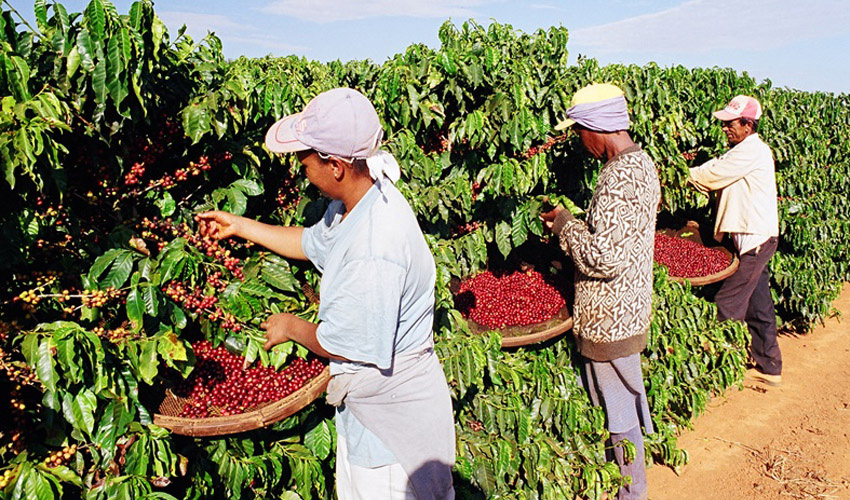Changing tide for the Rio Doce: bringing a river back to life
In the long term, it pays for business to use natural resources in a way that benefits all of society. Efforts to rehabilitate the Rio Doce watershed in Brazil following the 2015 mining disaster are a case in point, writes Yolanda Kakabadse, Chair of the Rio Doce Panel, which will provide advice on the restoration efforts, as the 8th World Water Forum opens in Brasilia this week.

The Candonga Reservoir downstream of the dam site was heavily affected by the spill.
Photo: Ibama CC2.0
In November 2015, disaster struck near the town of Mariana in Brazil. The Fundão tailings dam at the Samarco mine failed, spilling water, mud and debris 650km down the Rio Doce, eventually reaching the Atlantic Ocean. The collapse and mudslide killed 19 people, caused severe economic and social damage for communities living along the Rio Doce, and affected fish and other aquatic life. We don’t yet know the full extent of the damage it caused to critical ecosystems and water resources. However, we do know it was one of the country’s worst environmental disasters.
 The Rio Doce emptying into the Atlantic two weeks after the dam collapse
Photo: Arnau Aregio CC4.0
The Rio Doce emptying into the Atlantic two weeks after the dam collapse
Photo: Arnau Aregio CC4.0
Today, the Rio Doce still carries high levels of sediment from the spill, despite ongoing efforts to revegetate and restore river banks in the upper reaches of the watershed. These sediments can be detrimental to local livelihoods, human health, infrastructure such as hydropower and water treatment facilities, as well as ecosystems.
Water availability is about quantity and quality, and the Rio Doce basin has lost both. During the same period the dam collapsed, Brazil was facing one of its worst droughts in more than 80 years and this was already causing stress on the people and the environment, especially in the south-eastern part of the country, where the Rio Doce runs.
Communities were living with a polluted river long before the dam broke.
But communities in the Rio Doce watershed were living with a polluted river long before the dam broke. Over the years, the river has suffered from an accumulation of impacts from unsustainable mining, deforestation, poorly managed agriculture, insufficient sewage treatment in most communities along the river, among other causes. Strong laws to ensure the river’s protection were in place, but often lacked adequate enforcement. Even now, over two years after the collapse of the tailings dam, the government and local communities still find it difficult to address these challenges in this river basin.
One of my tasks as Chair of the IUCN-led Rio Doce Panel is to contribute guidance to the efforts to rehabilitate the watershed, and ensure a good quality of life for the affected communities, over the next five years. The Panel is tasked with keeping an independent eye on restoration with a landscape perspective, as a step towards long-term sustainability. Drawing on the latest scientific findings and using an inter-disciplinary approach, the Panel is working to identify practices and policies that will help local people rebuild their environment and livelihoods. The Panel’s findings will inform the Renova Foundation – legally mandated by the Brazilian government to drive the restoration of the basin after the dam collapsed – as well as mining companies BHP and Vale, which jointly own the Samarco mine.
 Yolanda Kakabadse surveys the landscape on a visit to the Rio Doce watershed
Photo: Rio Doce Panel
Yolanda Kakabadse surveys the landscape on a visit to the Rio Doce watershed
Photo: Rio Doce Panel
Over the years following the disaster, the situation in the Rio Doce basin has, understandably, become an extremely controversial and emotionally charged topic in Brazil and beyond. This is why objective, scientific advice and an approach that can help bring together communities, business and government are all the more crucial. For restoration efforts to succeed, we need partners who work together and are convinced about the importance of restoring the river’s health for everyone’s benefit, and who will help ensure that laws are adequately implemented and existing national programmes are executed when applicable.
More companies must recognise that it is better to prevent a disaster than to react to one.
Without water, there is no life and no economic activity. Let us remember that the Rio Doce is not just a river or a watershed. The area is home to over 3 million people, who depend on the river for water, food, livelihoods, leisure and more. The river basin is also of great importance to the region as it supports a wide range of economic activities, from livestock, coffee and cocoa farming to steel-making and mining.
 Coffee production relies on clean, abundant water supplies
Photo: Marcelo Silk Screen CC1.0
Coffee production relies on clean, abundant water supplies
Photo: Marcelo Silk Screen CC1.0
More companies around the world must recognise that it is better to prevent a disaster than to react to one. Samarco, for example, has already committed to spend at least US$5 billion to cover the costs of repairing damages caused by the dam collapse. Other costs related to loss of jobs, income, operation of the hydroelectric plant, and more, when added, will confirm: prevention is much cheaper than restoration.
Mining companies, in particular, know that their actions must extend beyond corporate social responsibility if they want to maintain their ‘social license’ to operate. In the Rio Doce watershed as elsewhere, it is in the long-term interest of the private sector to ensure that all sectors of society – especially local communities – benefit from business activity that is based on natural resource use. Today, companies need to manage their resources and minimise their impacts on the environment for the greater good of society. In other words, they must not only strive to be the best on the planet, but also the best for the planet.
IUCN and its Members must ensure that laws are effectively implemented to protect rivers like the Rio Doce and the people who depend on them.
As delegates gather for the 8th World Water Forum with the common aim of protecting this precious global resource, let us hope that the joint efforts to restore clean, safe water to the Rio Doce basin will inspire action well beyond Brazil. All those involved in rebuilding the Rio Doce watershed agree that they would like it to become a model for Brazil, one that protects the quality of the river and surrounding environment and therefore the health of the people, and that recognises law and order. IUCN and its Members worldwide have a responsibility to ensure that laws are effectively implemented to protect rivers like the Rio Doce and the people who depend on them.
Read this blog in Portuguese , Spanish or French
Languages
- English
- Français
- Español
- العربية
- Nederlands
- Deutsch
- Italiano
- ภาษาไทย
- Tiếng Việt
- Cambodian
- 简体中文
- 繁體中文
- Bahasa Indonesia
- 日本語
- Laothian
- Portuguese
- Русский
- اردو
Wow it is amazing to think of
Wow it is amazing to think of how a dam breaking can cause so many trickle down affects to occur. I hope the infrastructures have been put in place and that the efforts you guys are making are paying off. Preventing disasters before they occur is something we as a business world should all take part in we support your efforts and hope others will do the same. With the resources we have available today there is no reason not to fix and upgrade these problems before they even occur. It is much less costly to take action before hand and not wait till afterwards when it costs not in,y money but people, the environment and the animals.



Comments